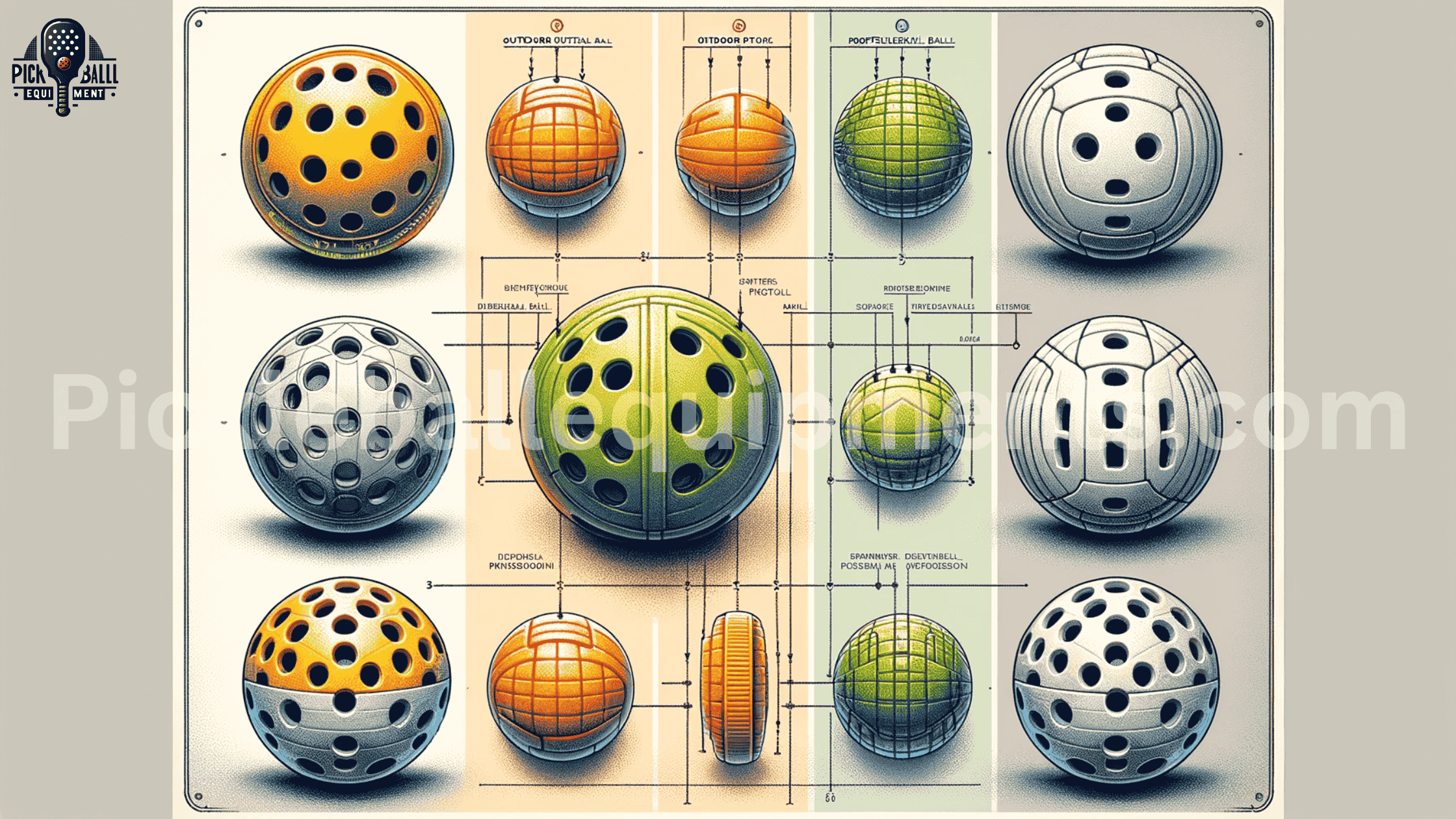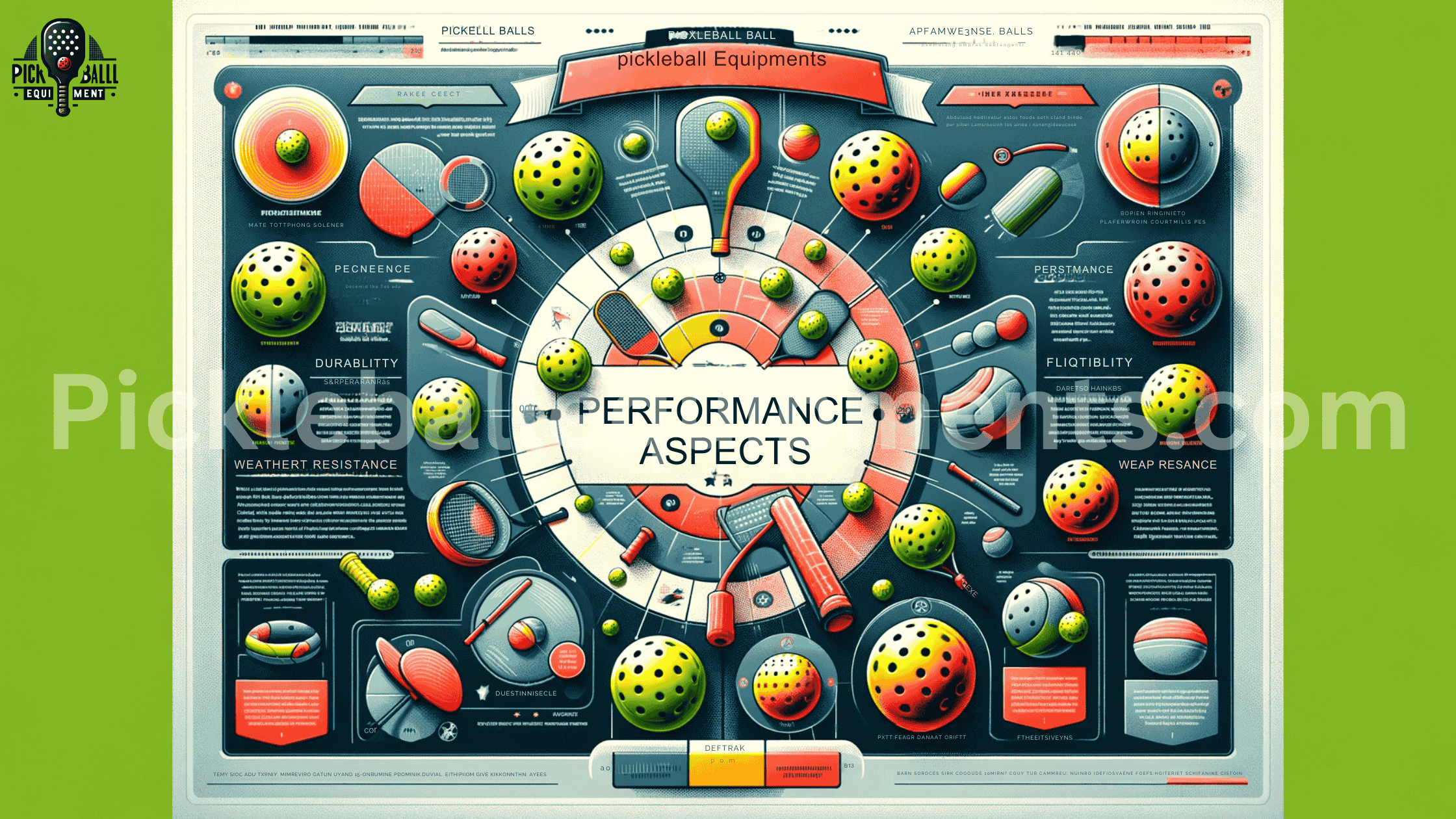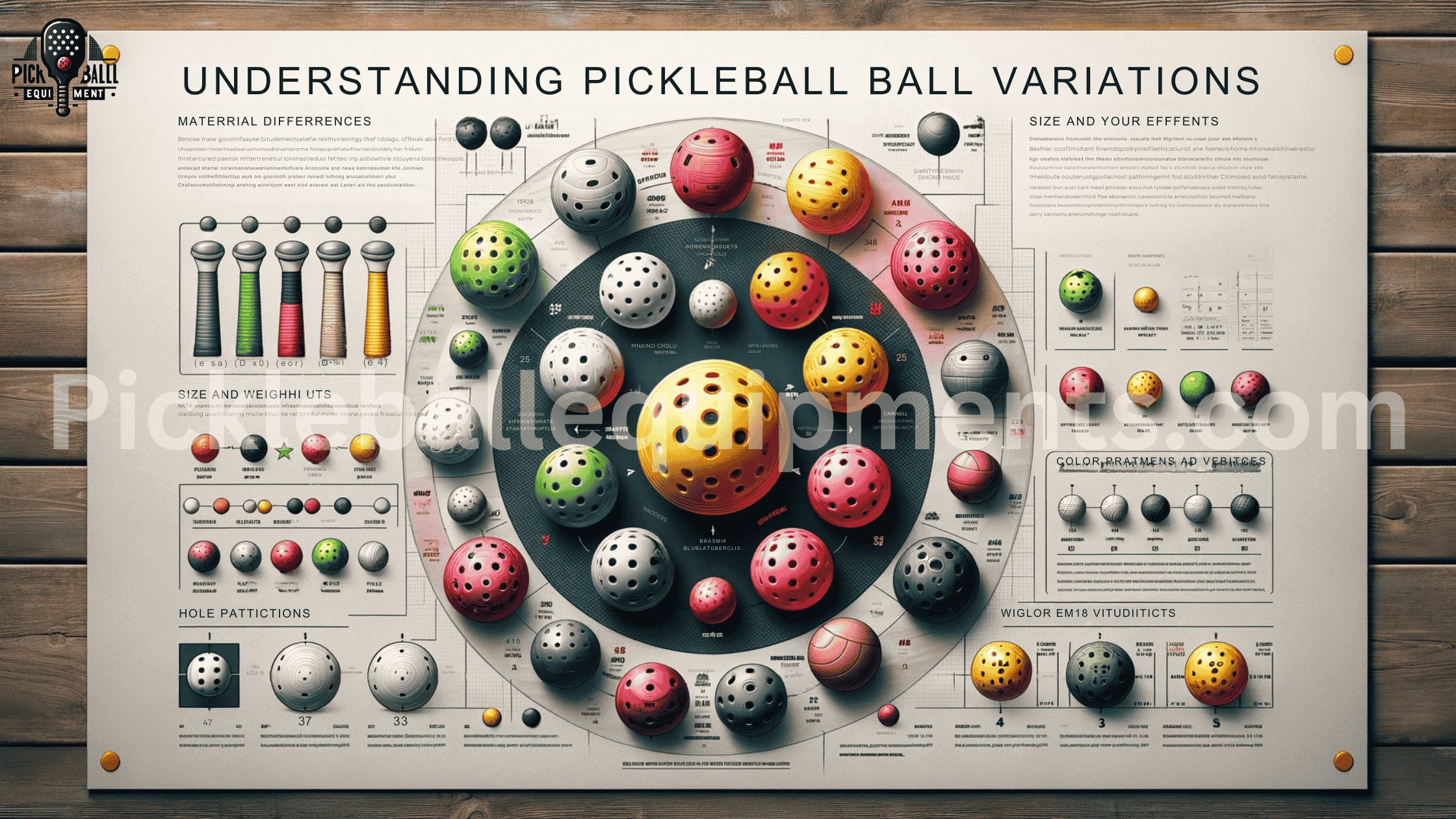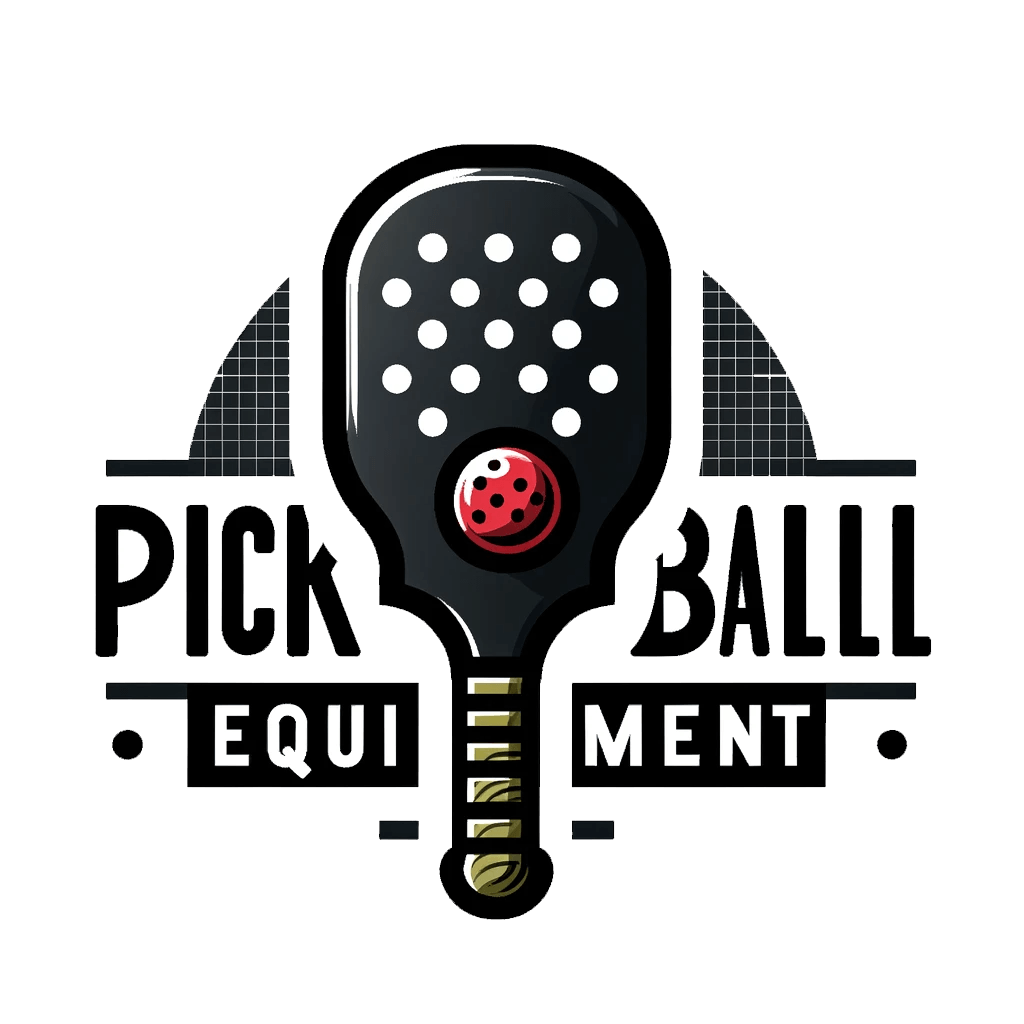Pickleball is a popular sport that mixes tennis, badminton, and table tennis. You need special equipment to play. To have better control, use paddles with holes. Use durable plastics for long-lasting performance. The Onix brand offers high-quality gear that meets these requirements. One crucial component is the pickleball ball itself. These ONIX pickleball balls are specially designed for the sport and are perfect for playing on a pickleball court. They come in various colors, made of durable plastics, and have distinct characteristics. The type of ball used on a pickleball court can affect gameplay, so players need to know the differences.
Outdoor pickleball balls are made to last in outdoor conditions like wind and temperature changes. These balls have strategically placed holes that help optimize their performance on the court. They typically have larger holes and a harder surface compared to indoor pickleball balls. Indoor pickleball balls with holes are made for use in controlled gymnasiums or sports complexes. They have smaller holes and a softer surface to ensure optimal performance on indoor courts.
To pick the right pickleball ball, players should know the difference between outdoor and indoor balls. This will improve their game experience.
Pickleball Balls Difference

Exploring Pickleball Balls Difference Indoor vs. Outdoor
Physical Differences
There are notable pickleball balls difference between indoor and outdoor options. Firstly, the count and size of the holes in the indoor ball play a crucial role in their aerodynamics and flight path. Pickleball balls usually have either 26 or 40 holes. The number and size of the holes affect the way the game is played.
Another important factor is ball hardness and response. Pickleball balls with different hardness levels have varying bounce and response during gameplay. The presence of holes in the balls can also affect their overall performance. Balls with holes that are softer give more control but may be slower. Harder balls with holes are faster but harder to control. To have the best indoor ball game, it’s important to find the right balance of hardness, holes, and response.
Playing Environment Suitability
Pickleballs made for indoor use are smooth and meant for courts with fewer holes. These balls are softer for different courts, giving players control and reducing noise during play.
Pickleballs for outdoors are made to withstand rough surfaces and various weather conditions. Outdoor tennis balls are usually tougher than indoor ones to last longer on rough courts. Outdoor balls are more durable because they are made with materials that prevent cracking or splitting.
Players’ preferences and game conditions determine whether indoor or outdoor pickleballs are chosen. When playing indoors on a smooth surface, using the right ball can make your experience better. On the other hand, if you play outside on a rough court or in unpredictable weather, using an outdoor ball will last longer and perform better.
Usage and Performance Factors
There are many things that affect how pickleball balls perform. These include durability, materials, size, speed, pace, and surface. To choose the right pickleball ball for you, think about these factors and what you like.
Bounce and speed variances are significant considerations. Pickleball balls bounce and move at different speeds, so players can change their strategies. Some balls have a higher bounce, while others offer a faster pace of play. To improve your gameplay and make better decisions in matches, it’s important to know these differences in the indoor ball.
Durability and material composition are equally important factors to consider. Pickleball balls are made from various materials, such as plastic or composite. The choice of material affects the ball’s durability and lifespan.
Identifying Pickleball Ball Types
Pickleball balls come in different types, specifically designed for either outdoor or indoor play. The distinction between these two types is crucial to ensure optimal performance and longevity of the ball. Let’s explore the characteristics and considerations for each type.
Visual and Tactile Distinctions
Outdoor pickleball balls are designed for use on outdoor courts, typically made of concrete or asphalt. These balls are made of harder plastic to last longer and handle rough surfaces. They also come in vibrant colors, such as yellow or neon green, which enhances visibility against the court background. The color contrast between the ball and the court surface can affect gameplay, allowing players to track the ball more easily.
Indoor pickleball balls are made for indoor courts made of wood or synthetic materials. To protect the indoor court, these balls are softer and made of plastic instead of harder materials used outdoors. The softer material ensures a quieter game while maintaining a slower pace. During gameplay, indoor balls have tactile markings for better grip and control.
Weight and Hardness Considerations
Weight plays an essential role in determining how pickleball balls feel during play. Outdoor pickleballs are a bit heavier than indoor ones because they’re made with harder plastic. Heavier balls offer more power when hit but may require additional effort to control accurately.
On the other hand, indoor pickleballs are generally lighter since they are made from softer plastics. Lighter balls allow players to react quickly during fast-paced rallies but may sacrifice some power behind shots. It’s important to find a balance between weight and hardness. This depends on what each player likes and how they play.
Official Competition Guidelines
The USA Pickleball sets rules for the balls used in official competitions. These guidelines ensure fair play and consistency across tournaments. Competitive players should learn these guidelines to choose the right balls for their matches.
Using balls that meet the official competition standards is essential for tournament participation. It ensures a level playing field for all players and maintains consistency in gameplay. To focus on skills and strategies, players can follow these guidelines and not worry about equipment.
Performance Aspects of Pickleball Balls

The type of ball used can greatly impact the game. Pickleball balls are made for playing either outside or inside. Each type has its own advantages for different conditions.
Impact on Gameplay
The choice of pickleball ball can have a significant influence on gameplay. Balls are made for different playing conditions, whether you’re inside or outside. Factors such as bounce, trajectory, and durability all come into play and affect how the game unfolds.
Outdoor pickleball balls are made for playing outside on different surfaces and in different weather. They provide reliable bounce and trajectory even on rougher surfaces. Indoor pickleball balls are made for smooth indoor courts. They give better control and responsiveness during rallies.
Other factors that impact gameplay include wind interference and ball weight. Wind can affect the flight path of the ball, making it more challenging to predict its trajectory accurately. The weight of the ball (measured in ounces) affects how it behaves during play. Lighter balls may require less effort when hitting shots but may also be more susceptible to wind interference.
Player Experience Enhancement
Enhancing player experience is crucial in any sport, including pickleball. Choosing the right pickleball ball can make playing more enjoyable and improve performance.
When choosing a ball, think about what shots you like and how skilled you are. Beginners may benefit from using softer balls that offer a slower pace and easier control. On the other hand, experienced players might prefer faster-paced games with harder balls that allow for powerful shots.
Court conditions also contribute to player experience enhancement. Outdoor courts often have different surface materials compared to indoor courts. Choosing the right size and material for a pickleball ball can improve the game and make it more fun.
Competitive Play Quality
In competitive pickleball, the quality of play is of utmost importance. Competitive players prefer high-performance pickleball balls for fair competition and optimal playability.
In competitive play, USA Pickleball only allows certain brands and models of pickleball balls. These balls meet strict standards for how they bounce, their weight, and overall quality.
Durability of Pickleball Balls
Pickleball balls come in different variations, designed for specific playing conditions. One crucial aspect to consider when selecting pickleball balls is their durability. These balls are very durable, so you don’t need to replace them often. They’re great for outdoor courts with a lot of people.
Material and Construction Analysis
The materials used in pickleball balls play a significant role in their durability and overall performance. Researchers have studied different ball materials to understand their hardness and surface elements. The performance of pickleball balls is affected by weight, hole patterns, and construction.
They are specifically designed to withstand the harsh conditions found on outdoor courts. These balls are made with durable materials that can resist wear and tear from rough surfaces. The construction of outdoor pickleballs allows them to endure the impact of hard hits without losing shape or integrity.
On the other hand, indoor pickleball balls are typically softer than their outdoor counterparts. The softness helps them last longer indoors by preventing cracking when they hit hard surfaces. Indoor pickleballs don’t bounce as much as outdoor ones, so they’re more consistent to play with.
Longevity in Different Play Conditions
The longevity of pickleball balls depends on various factors, including the play conditions. Playing outside can greatly affect how well and how long these balls last because they are exposed to things like the sun, wind, and moisture. Outdoor pickleballs are more durable than indoor ones, so they can handle tough conditions.
Indoor play generally involves less exposure to harsh environmental factors. Indoor pickleballs last longer than outdoor ones because they don’t wear out as quickly.
When picking equipment, consider the contrasts between outdoor and indoor pickleballs. Using the appropriate type of ball for each setting ensures optimal gameplay and extends the lifespan of the balls.
Selection Criteria for the Right Pickleball
When choosing a pickleball ball, it’s important to consider the player’s skill level and preferences. For beginners, choosing a softer ball can enhance their learning experience by reducing the impact on their shots. A softer ball allows beginners to have better control and feel while developing their skills on the court.
On the other hand, more experienced players may prefer a firmer ball that offers increased speed and responsiveness. These balls provide a greater challenge and require precise technique to master. They are designed for players who have developed their skills and are looking for a competitive edge in their gameplay.
In addition to skill level, player preferences also come into play when choosing pickleball balls. Some players may prefer a specific brand or model based on personal preference or past experiences. It’s important for players to try out different types of balls to find the one that suits their playing style and overall enjoyment of the game.
The location of your pickleball game, whether it’s indoor or outdoor, will also influence your choice of pickleball balls. Outdoor play is quite common in pickleball, where weather conditions such as wind and temperature can affect gameplay. Outdoor pickleball balls are specifically designed to withstand these external factors. They are made with durable materials that can handle rougher surfaces like asphalt or concrete found on outdoor courts.
Indoor play happens in controlled environments, so outside factors don’t affect the game much. The Indoor pickleball courts typically have smoother playing surfaces compared to outdoor courts. Indoor pickleball balls are made for playing inside and have unique materials and features.
Outdoor and indoor pickleball balls perform differently because of design and construction variations. Outdoor balls often have distinct hole patterns that affect their speed, bounce, and flight trajectory.
Understanding Pickleball Ball Variations

The type of ball used can have a significant impact on gameplay. There are two main variations of pickleball balls: indoor and outdoor. There are various types of equipment for different playing conditions. Each type has unique characteristics that affect the game.
Hole Pattern Influence on Play
The hole patterns in pickleball balls play a crucial role in shaping the game experience, both indoors and outdoors. The size of the hole can change how the ball performs and how it moves. Indoor pickleballs have hole patterns that reduce wind and improve play in indoor games. These patterns keep the flight steady and prevent unexpected movements from air resistance.
Ball Weight and Game Dynamics
The weight of pickleball balls is another important factor that impacts gameplay dynamics. Whether you’re playing with indoor or outdoor balls, their weight can significantly affect how the game unfolds. Outdoor pickleballs tend to be heavier compared to their indoor counterparts, typically weighing around 0.92 to 0.98 ounces. This difference in weight directly affects factors such as bounce and control during gameplay.
When you play pickleball outside, the heavier balls help you have better control, especially in the wind. Adding weight to the ball makes its flight path more stable, so it won’t be affected by wind or air pressure changes.
On the other hand, indoor balls are lighter, which results in a slower pace and lower bounce compared to outdoor balls. Players have extra time to react and adjust their shots when playing indoors with limited space.
The Significance of Ball Quality
Benefits of High-Quality Balls
To play well, you need good pickleball balls. They work for indoor and outdoor courts. These balls are made for different playing areas, so players have a fun and consistent experience.
Durability is paramount. Outdoor pickleball balls are crafted to withstand the impact and rigors of outdoor courts. They are made with sturdy materials that can endure intense gameplay, including hard hits and bounces on rough surfaces. Outdoor pickleball balls are strong and last a long time, so you don’t have to replace them often in long matches.
On the other hand, indoor pickleball balls focus on precision and control. These balls are made for indoor courts that are different from outdoor ones. Indoor pickleball balls have a steady bounce. They give players better control, so they can make accurate shots easily. Indoor courts need a ball that responds consistently to player actions, so the game is fair.
The USA Pickleball association understands that ball quality affects fairness at different venues. They have set guidelines for pickleball ball quality to keep the gameplay consistent. Players can rely on tournament or casual match balls to meet standards for weight, size, bounce, hardness, and performance.
Tips for Choosing Your Ideal Pickleball
Assessing your playing style is crucial. To make a good choice, you need to know your playing style. Every player has their own way of doing things.
Consider the type of play and skill level of players, as it can greatly impact the choice of pickleball balls. For beginners or players who prefer a slower pace, softer balls with less bounce may be more suitable. If you’re new, you can learn skills without feeling overwhelmed. These balls are easier to control and don’t hit the paddle as hard.
On the other hand, advanced players may opt for faster and more responsive balls that allow for quick shots and strategic plays. Experienced players who can handle the extra intensity will like the faster, bouncier balls.
When you pick a pickleball ball, think about where you’ll play and what you like. Also, consider the court surface. Outdoor pickleball courts usually have tougher surfaces than indoor courts. This means that outdoor pickleballs must be more durable. Therefore, choosing outdoor-specific pickleballs designed for rugged outdoor conditions would be ideal.
Indoor courts have smooth surfaces. They need a different ball for consistent bounce and control. Indoor pickleballs are usually softer than outdoor ones because they don’t need to handle wind or rough surfaces.
Consider these factors and your playing style to make an informed decision about the best pickleball ball for you. When choosing a ball, consider both your preferences and how it affects your performance. Different factors matter for each player.
Optimizing Your Game with the Correct Ball Choice
The choice of pickleball balls can significantly impact your game, whether you are playing indoors or outdoors. Outdoor pickleball balls are made to last outside and be durable on rough surfaces. In contrast, indoor pickleball balls are made for indoor play. They give better control and bounce quietly on smooth surfaces like basketball courts.
Enhancing Skill with Specific Ball Types
Using the right ball is crucial for optimizing your game. Indoor pickleball balls are specifically designed for use on indoor courts, such as basketball or tennis courts. The indoor pickleball balls are softer than outdoor ones, so you have more control and precision. Indoor balls have a softer surface, so they bounce quietly, perfect for quiet places.
On the other hand, outdoor pickleball requires a different type of ball due to environmental factors such as wind and temperature. Outdoor pickleball balls are designed to be tougher for outdoor courts, with a harder surface. Because they are built stronger, they can handle tough impacts and keep performing well.
Adapting to Different Playing Environments
It’s important to pick the right ball for the place you’re playing, whether it’s inside or outside. Outdoor play presents unique challenges that require specific ball characteristics. The wind can affect the flight path of the ball, making it harder to control. Outdoor pickleballs have features that make them more stable in the wind.
Indoor play, on the other hand, takes place on smooth surfaces like basketball courts or gymnasiums. These surfaces allow for faster gameplay but require a specific type of ball that performs well on these courts. Indoor pickleballs have a smoother surface that enables better grip and control when executing shots such as spins or drops.
Durability is another factor to consider when choosing pickleball balls. Outdoor balls are designed to withstand the rougher surfaces and harsher conditions of outdoor courts. These objects are made strong so they won’t get damaged when hit and will work well. Indoor balls, while not exposed to the same level of wear and tear, are still built for durability on smoother indoor surfaces.
Conclusion
To conclude, picking the right pickleball balls is important for improving your game and enjoying playing. We looked at pickleballs for indoors and outdoors, studied different types, and tested how well they perform and last. These are the key factors to consider when choosing the right pickleball for you. The quality of the ball is very important because it affects how you play and how much you enjoy the game.
When deciding, evaluate pickleball balls by their material, bounce, and size to make an informed choice. Consider your playing environment and skill level to determine whether an indoor or outdoor ball is more suitable. Take into account the specific requirements of your game style and preferences.
After reading this article, you can use the information to pick the best pickleball ball. This will help you play better. So go ahead, explore different options, test them out, and elevate your pickleball game to new heights!
Frequently Asked Questions
What is the difference between indoor and outdoor pickleball balls?
Pickleball balls for indoors are made for smooth surfaces, and outdoor ones are tougher for rough courts. The main difference lies in the ball’s composition and durability.
How can I identify different types of pickleball balls?
Pickleball balls are typically color-coded for easy identification. Indoor balls are often yellow or white, while outdoor balls come in various bright colors like orange or green. Look for markings or labels on the ball indicating its intended use.
What performance aspects should I consider when choosing pickleball balls?
When selecting pickleball balls, consider their bounce height, weight, and hardness. These factors can affect the speed of play and overall game experience. Bounce height determines how high the ball will rebound off the court surface.
How durable are pickleball balls?
The durability of pickleball balls varies depending on their quality and construction. Outdoor balls tend to be more durable due to their sturdier materials. However, all pickleballs will eventually wear out with regular use and may need replacement over time.
What criteria should I consider when choosing the right pickleball?
When choosing a pickleball, think about where you’ll play, your skill level, ball type, and budget. It’s essential to find a ball that suits your playing style and provides an enjoyable game experience.
